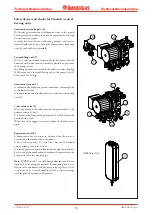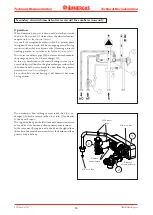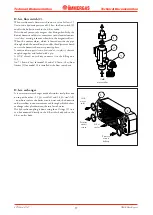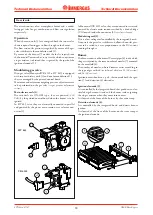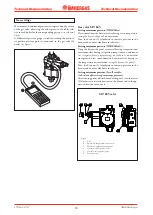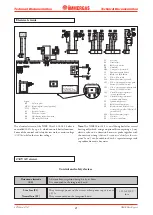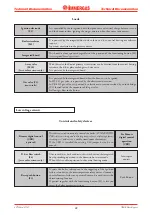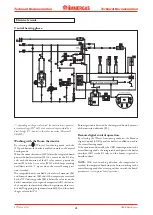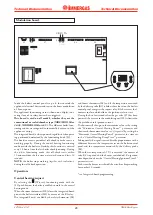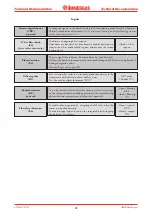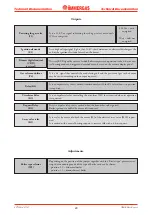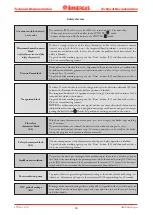
18
STNM ed 07/07
NIKE Mini Export
Technical Documentation
Technical Documentation
The circuit consists of an atmospheric burner and a modu-
lating gas valve for gas combustion and flow rate regulation
respectively.
Operation.
When the main coils (3) are energised both the inner valve
shutters open allowing gas to flow through to the burner.
The flow rate/outlet pressure is regulated by means of the gas
valve stabiliser via the modulation coil (1).
By means of the burner (7) nozzles the fuel is injected into
the horizontal Venturi tubes
(ramps)
inside which an optimum
air-gas mixture is obtained that is ignited by the spark of the
ignition electrode (5).
Modulating gas valve.
Then gas valve (Honeywell VK 4105 o SIT 845) is equipped
with two main safety coils (3) and one for modulation (1);
they are managed by the printed control board.
Maximum and minimum outgoing pressure adjustments are
to be performed on the gas valve
(see gas pressure adjustment
section).
Main electric coils (3).
The two coils are ON-OFF type, they are powered
(230
Volts)
by the printed control board when the burner is to be
ignited.
In SIT 845 valve, they are electrically connected in parallel
and powered by the power main tension via a relevant con-
nector (2).
Gas circuit.
In Honeywell VK 4105 valve, they are connected in series and
powered by electric main tension rectified by a diode bridge
(U1) located inside the connector (2)
(see electric layout).
Modulating coil (1).
This is a low voltage coil controlled by the integrated board.
It controls the gas valve stabiliser and allows the outlet pres-
sure to be varied in a way proportionate to the DC current
running through it.
Burner.
The burner consists of horizontal Venturi pipes (6) inside which
the gas is injected by the same number of nozzles (7) mounted
on the manifold (8).
The number of nozzles, whose diameter varies according to
the type of gas utilised
(see technical data)
are 12
(24 version)
and 14
(28 version)
.
Ignition occurs thanks to a p.c.b. that controls both the igni-
tion (5) and detection (4) electrodes.
Ignition electrode (5).
It is controlled by the integrated board that produces an elec-
trical charge between its end and the burner surface, igniting
the air-gas mixture when they come into contact.
It is located at the front of the burner, by the centre ramp.
Detection electrode (4).
It is controlled by the integrated board and detects burner
ignition.
It is located at the front of the burner on the same ramp as
the ignition electrode.
1
3
2
1
2
3
SIT 845
VK 4105












